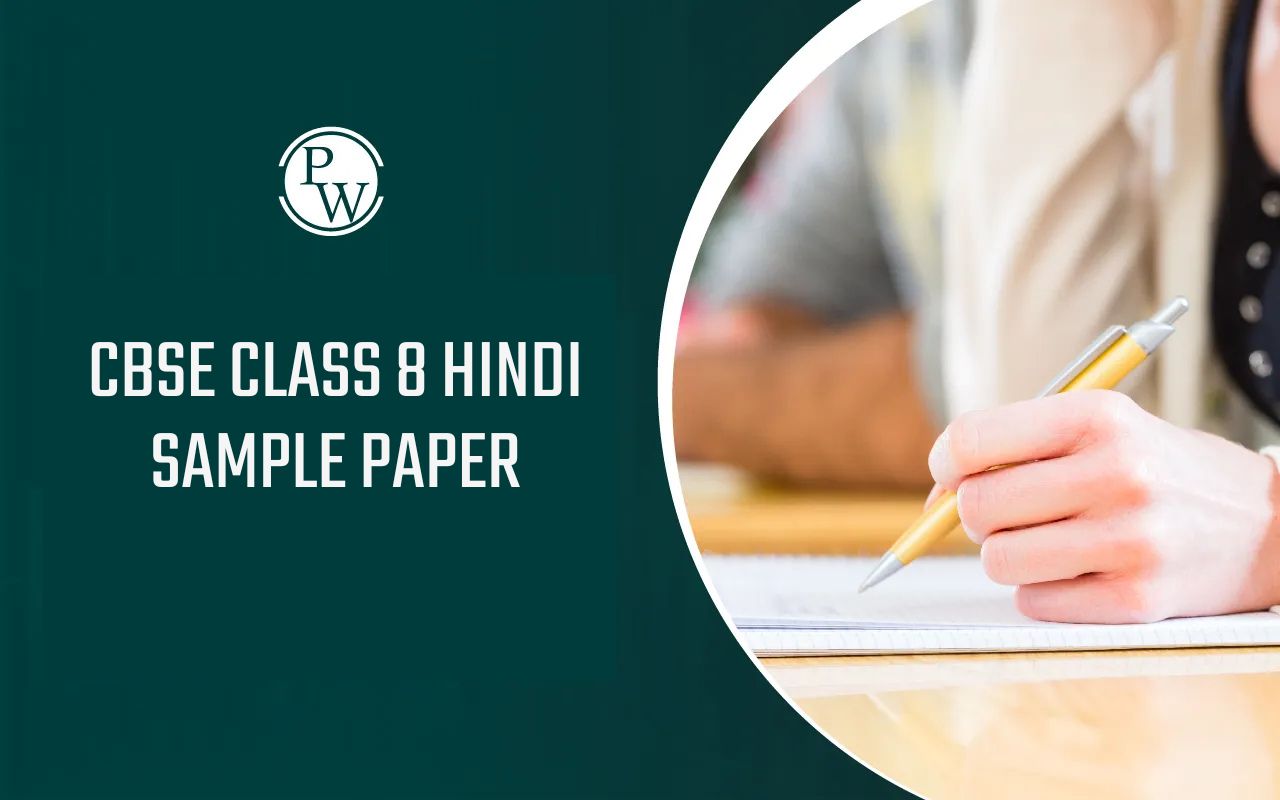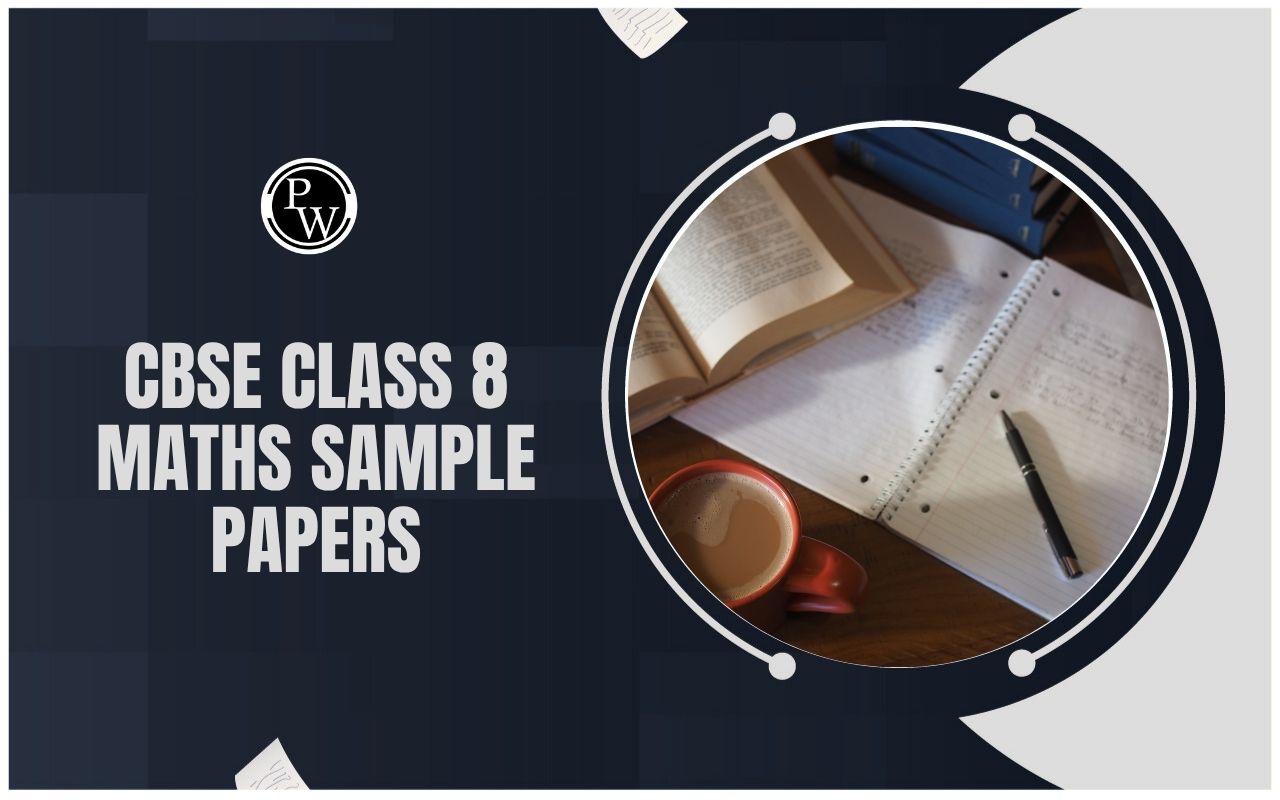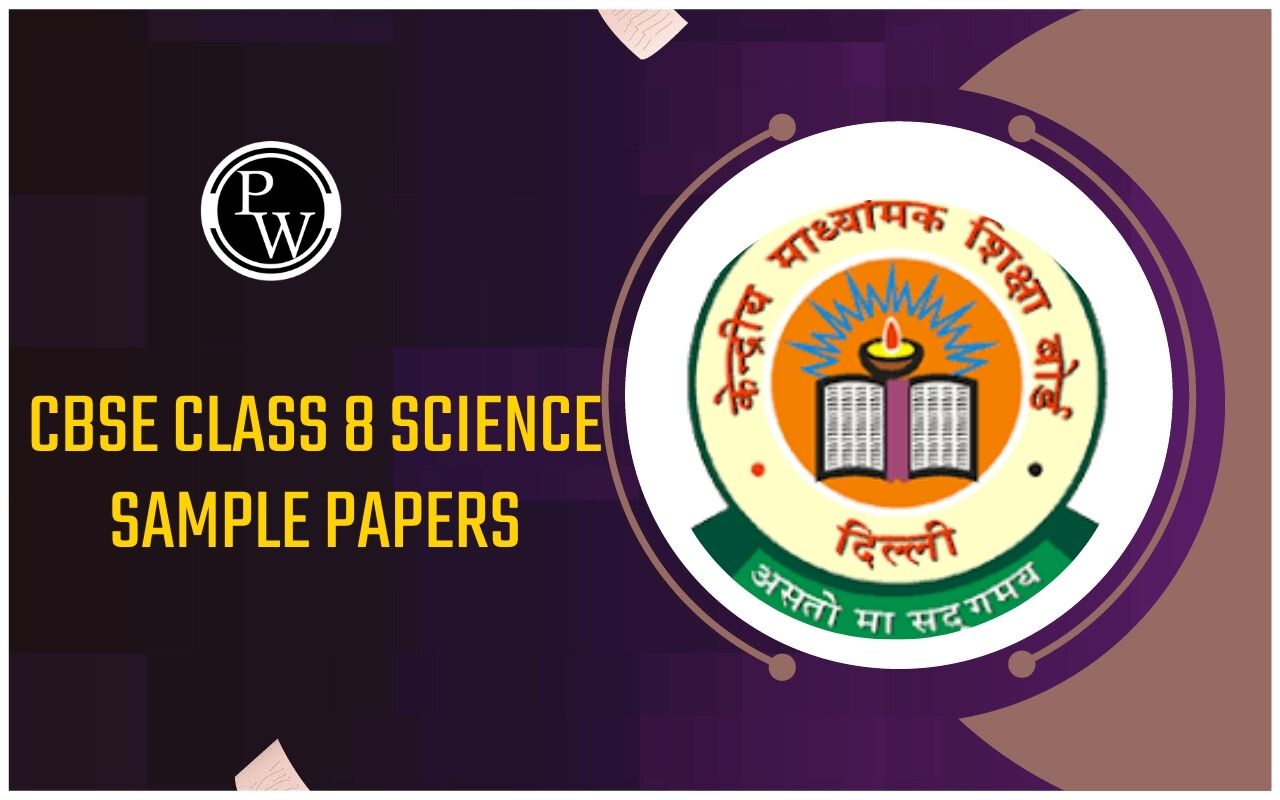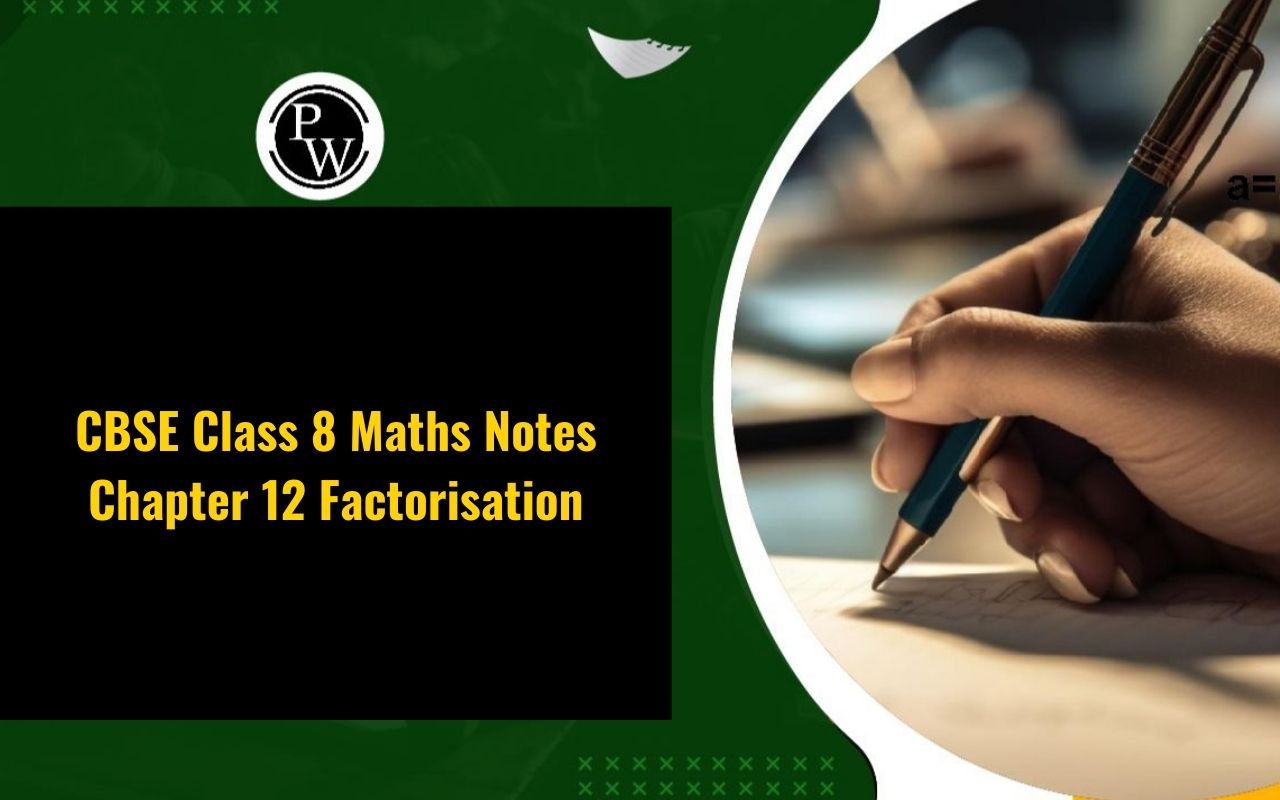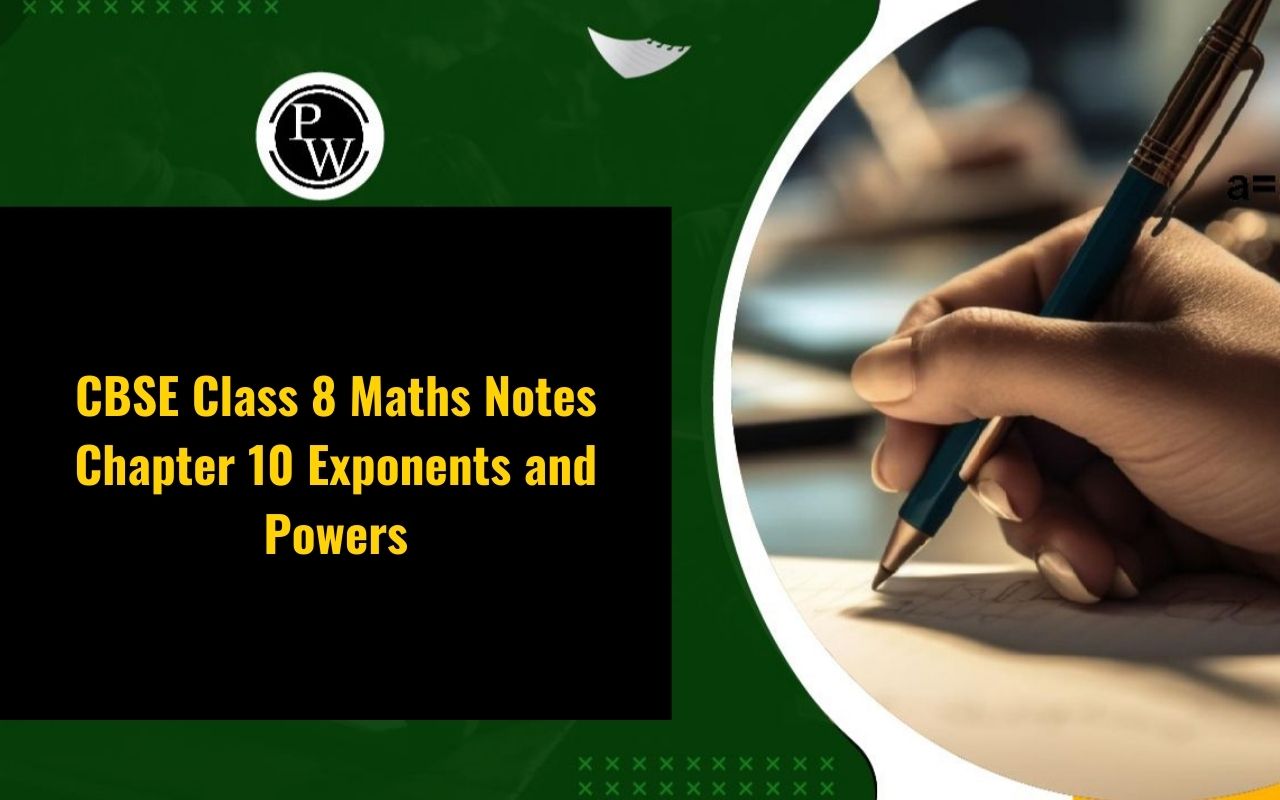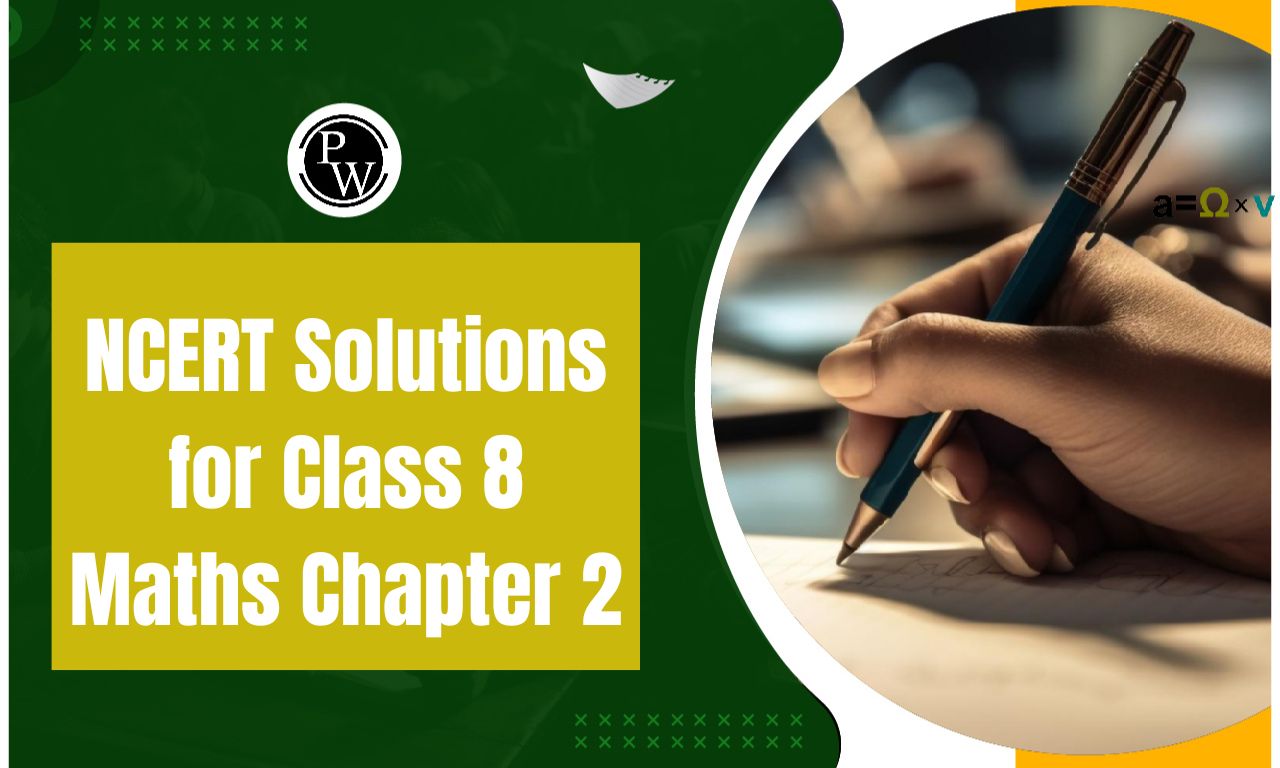
NCERT Solutions for Class 8 Maths Chapter 11: The purpose of the NCERT Solutions for Class 8 Maths Chapter 11 Direct and Inverse Proportions is to assist students in practicing an increasing number of questions and dispelling any misconceptions they may have regarding the ideas and subjects covered in this chapter. A series of maths problems for CBSE Class 8 has been organized and addressed straightforwardly and rationally, employing methodical approaches to problem-solving.
The free PDF of Maths NCERT Class 8 Solutions, created by our subject matter specialists by the most recent CBSE curriculum, is provided below for additional practice. To find the correlation between quantity and amount, both direct and inverse proportions are used. Additionally, they are labeled as inversely or directly proportional. The proportionality symbol is represented by the letter "∝." For example, '∂b' is used to indicate if an is proportionate to b. Conversely, if a and b have an inverse relationship, it is written as "∂1/b." The NCERT Solutions available here make the ideas easily understandable.NCERT Solutions for Class 8 Maths Chapter 11 Overview
A comprehensive selection of tasks based on the CBSE syllabus is included in the Class 8 Mathematics NCERT Solutions. Students in Class 8 can use this learning resource to gain answers to questions and prepare for the yearly test. Students will learn about basic principles of variation in Class 8 CBSE Chapter 11, such as how variation in one variable leads to variation in another quantity. For instance, more money deposited in a bank equals higher interest rates.NCERT Solutions for Class 8 Maths Chapter 11 PDF
Here we have provided NCERT Solutions for Class 8 Maths Chapter 11 for the ease of students so that they can just download the pdf and use it easily without the internet. These NCERT Solutions for Class 8 Maths Chapter 11 will help students understand the chapter better.NCERT Solutions for Class 8 Maths Chapter 11 PDF
NCERT Solutions for Class 8 Maths Chapter 11
Here we have provided NCERT Solutions for Class 8 Maths Chapter 11 for the ease of students so that they can prepare better for their upcoming exams - 1. The following are the car parking charges near a railway station up to,4 hours – Rs.60
8 hours – Rs.100
12 hours – Rs.140
24 hours – Rs.180

Check if the parking charges are in direct proportion to the parking time.
Solution:
Charges per hour: C1 = 60/4 = Rs. 15 C2 = 100/8 = Rs. 12.50 C3 = 140/12 = Rs. 11.67 C4 = 180/24 = Rs.7.50 Here, the charges per hour are not the same, i.e. C1 ≠ C2 ≠ C3 ≠ C4 Therefore, the parking charges are not in direct proportion to the parking time. 2. A mixture of paint is prepared by mixing 1 part of red pigments with 8 parts of the base. In the following table, find the parts of the base that need to be added. Solution:
Let the ratio of parts of red pigment and parts of the base be a/b.
Case 1: Here, a
1
= 1, b
1
= 8
a
1
/b
1
= 1/8 = k (say)
Case 2: When a
2
= 4, b
2
=?
Solution:
Let the ratio of parts of red pigment and parts of the base be a/b.
Case 1: Here, a
1
= 1, b
1
= 8
a
1
/b
1
= 1/8 = k (say)
Case 2: When a
2
= 4, b
2
=?
 b
2
= a
2
/k = 4/(1/8) = 4×8 = 32
Case 3: When a
3
= 7, b
3
=?
b
2
= a
2
/k = 4/(1/8) = 4×8 = 32
Case 3: When a
3
= 7, b
3
=?
 b
3
= a
3
/k = 7/(1/8) = 7×8 = 56
Case 4: When a
4
= 12, b
4
=?
b
3
= a
3
/k = 7/(1/8) = 7×8 = 56
Case 4: When a
4
= 12, b
4
=?
 b
4
= a
4
/k = 12/(1/8) = 12×8 = 96
Case 5: When a
5
= 20, b
5
=?
b
4
= a
4
/k = 12/(1/8) = 12×8 = 96
Case 5: When a
5
= 20, b
5
=?
 b
5
= a
5
/k = 20/(1/8) = 20×8 = 160
When combining results for all the cases, we get
b
5
= a
5
/k = 20/(1/8) = 20×8 = 160
When combining results for all the cases, we get
 3. In Question 2 above, if 1 part of a red pigment requires 75 mL of the base, how much red pigment should we mix with 1800 mL of the base?
3. In Question 2 above, if 1 part of a red pigment requires 75 mL of the base, how much red pigment should we mix with 1800 mL of the base?
Solution:
Let the parts of red pigment mix with 1800 mL base be x. Since it is in direct proportion,
Since it is in direct proportion,



 Hence, with the base 1800 mL, 24 parts of the red pigment should be mixed.
Hence, with the base 1800 mL, 24 parts of the red pigment should be mixed.
4. A machine in a soft drink factory fills 840 bottles in six hours. How many bottles will it fill in five hours?

Solution :
Let the number of bottles filled in five hours be x. Here, the ratio of hours and bottles is in direct proportion. 6x = 5×840
x = 5×840/6 = 700
Hence, the machine will fill 700 bottles in five hours.
5. A photograph of a bacteria enlarged 50,000 times attains a length of 5 cm, as shown in the diagram. What is the actual length of the bacteria? If the photograph is enlarged 20,000 times only, what would be its enlarged length?
6x = 5×840
x = 5×840/6 = 700
Hence, the machine will fill 700 bottles in five hours.
5. A photograph of a bacteria enlarged 50,000 times attains a length of 5 cm, as shown in the diagram. What is the actual length of the bacteria? If the photograph is enlarged 20,000 times only, what would be its enlarged length?
Solution :
Let the enlarged length of bacteria be x. Actual length of bacteria = 5/50000 = 1/10000 cm = 10 -4 cm Here, the length and enlarged length of bacteria are in direct proportion.
Here, the length and enlarged length of bacteria are in direct proportion.



 x= 2cm
Hence, the enlarged length of bacteria is 2 cm.
6. In a model of a ship, the mast is 9 cm high, while the mast of the actual ship is 12 m high. If the length of the ship is 28 m, how long is the model ship?
x= 2cm
Hence, the enlarged length of bacteria is 2 cm.
6. In a model of a ship, the mast is 9 cm high, while the mast of the actual ship is 12 m high. If the length of the ship is 28 m, how long is the model ship?

Solution :
Let the length of the model ship be x. Here, the length of the mast and the actual length of the ship are in direct proportion.
Here, the length of the mast and the actual length of the ship are in direct proportion.



 x = 21 cm
Hence, the length of the model ship is 21 cm.
7. Suppose 2 kg of sugar contains 9×10
6
crystals. How many sugar crystals are there in
(i) 5 kg of sugar? (ii) 1.2 kg of sugar?
x = 21 cm
Hence, the length of the model ship is 21 cm.
7. Suppose 2 kg of sugar contains 9×10
6
crystals. How many sugar crystals are there in
(i) 5 kg of sugar? (ii) 1.2 kg of sugar?
Solution:
(i) Let sugar crystals be x. Here, the weight of sugar and the number of crystals are in direct proportion.
Here, the weight of sugar and the number of crystals are in direct proportion.



 =
=
 Hence, the number of sugar crystals is
Hence, the number of sugar crystals is
 (ii) Let sugar crystals be x.
Here, the weight of sugar and the number of crystals are in direct proportion.
(ii) Let sugar crystals be x.
Here, the weight of sugar and the number of crystals are in direct proportion.




 =
=
 Hence, the number of sugar crystals is 5.4×10
6
.
8. Rashmi has a road map with a scale of 1 cm representing 18 km. She drives on the road for 72 km. What would be her distance covered on the map?
Hence, the number of sugar crystals is 5.4×10
6
.
8. Rashmi has a road map with a scale of 1 cm representing 18 km. She drives on the road for 72 km. What would be her distance covered on the map?
Solution:
Let the distance covered in the map be x. Here, the actual distance and distance covered in the map are in direct proportion.
Here, the actual distance and distance covered in the map are in direct proportion.



 x = 4 cm
Hence, the distance covered on the map is 4 cm.
9. A 5 m 60 cm high vertical pole casts a shadow 3 m 20 cm long. Find at the same time (i) the length of the shadow cast by another pole 10 m 50 cm high and (ii) the height of a pole which casts a shadow 5 m long.
x = 4 cm
Hence, the distance covered on the map is 4 cm.
9. A 5 m 60 cm high vertical pole casts a shadow 3 m 20 cm long. Find at the same time (i) the length of the shadow cast by another pole 10 m 50 cm high and (ii) the height of a pole which casts a shadow 5 m long.
Solution:
Here, the height of the pole and the length of the shadow are in direct proportion. And 1 m = 100 cm 5 m 60 cm = 5×100+60 = 560 cm 3 m 20 cm = 3×100+20 = 320 cm 10 m 50 cm = 10×100+50 = 1050 cm 5 m = 5×100 = 500 cm (i) Let the length of the shadow of another pole be x.



 x= 600 cm = 6m
Hence, the length of the shadow of another pole is 6 m.
(ii) Let the height of the pole be x.
x= 600 cm = 6m
Hence, the length of the shadow of another pole is 6 m.
(ii) Let the height of the pole be x.




 = 875 cm = 8 m 75 cm
Hence, the height of the pole is 8 m 75 cm.
10. A loaded truck travels 14 km in 25 minutes. If the speed remains the same, how far can it travel in 5 hours?
= 875 cm = 8 m 75 cm
Hence, the height of the pole is 8 m 75 cm.
10. A loaded truck travels 14 km in 25 minutes. If the speed remains the same, how far can it travel in 5 hours?
Solution:
Let the distance covered in 5 hours be x km. 1 hour = 60 minutes Therefore, 5 hours = 5×60 = 300 minutes Here, the distance covered and time are in direct proportion.
Here, the distance covered and time are in direct proportion.

 25x = 300(14)
25x = 300(14)
 x = 168
Therefore, the truck can travel 168 km in 5 hours.
x = 168
Therefore, the truck can travel 168 km in 5 hours.
NCERT Solutions for Class 8 Maths Chapter 11 Ex 11.2
1. Which of the following are in inverse proportion?
(i) The number of workers on a job and the time to complete the job.
(ii) The time taken for a journey and the distance traveled at a uniform speed.
(iii) Area of cultivated land and the crop harvested.
(iv) The time taken for a fixed journey and the speed of the vehicle.
(v) The population of a country and the area of land per person.
Solution:
(i) The number of workers and the time to complete the job is in inverse proportion because fewer workers will take more time to complete a job, and more workers will take less time to complete the same job. (ii) Time and distance covered in direct proportion. (iii) It is a direct proportion because more are of cultivated land will yield more crops. (iv) Time and speed are in inverse proportion because if time is less, speed is more. (v) It is an inverse proportion. If the population of a country increases, the area of land per person decreases.2. In a Television game show, the prize money of Rs.1,00,000 is to be divided equally amongst the winners. Complete the following table and find whether the prize money given to an individual winner is directly or inversely proportional to the number of winners:

Solution:
Here, the number of winners and prize money are in inverse proportion because winners are increasing, and prize money is decreasing. When the number of winners is 4, each winner will get =100000/4 = Rs. 25,000 When the number of winners is 5, each winner will get =100000/5 = Rs. 20,000 When the number of winners is 8, each winner will get =100000/8 = Rs. 12,500 When the number of winners is 10, each winner will get = 100000/10 = Rs. 10,000 When the number of winners is 20, each winner will get = 100000/20 = Rs. 5,0003. Rehman is making a wheel using spokes. He wants to fix equal spokes in such a way that the angles between any pair of consecutive spokes are equal. Help him by completing the following table:

(i) Are the number of spokes and the angles formed between the pairs of consecutive spokes in inverse proportion?
(ii) Calculate the angle between a pair of consecutive spokes on a wheel with 15 spokes.
(iii) How many spokes would be needed, if the angle between a pair of consecutive spokes is 40 degrees?
Solution:
Here, the number of spokes is increasing, and the angle between a pair of consecutive spokes is decreasing. So, it is an inverse proportion, and the angle at the center of a circle is 360 degrees. When the number of spokes is 8, then the angle between a pair of consecutive spokes = 360/8 = 45 degree When the number of spokes is 10, then the angle between a pair of consecutive spokes = 360/10= 36 degrees. When the number of spokes is 12, then the angle between a pair of consecutive spokes = 360/12 = 30 degrees. (i) Yes, the number of spokes and the angles formed between a pair of consecutive spokes are in inverse proportion.
(ii) When the number of spokes is 15, then the angle between a pair of consecutive spokes = 360/15= 24 degrees.
(iii) The number of spokes would be needed = 360/40 = 9
(i) Yes, the number of spokes and the angles formed between a pair of consecutive spokes are in inverse proportion.
(ii) When the number of spokes is 15, then the angle between a pair of consecutive spokes = 360/15= 24 degrees.
(iii) The number of spokes would be needed = 360/40 = 9
4. If a box of sweets is divided among 24 children, they will get 5 sweets each. How many would each get, if the number of children is reduced by 4?
Solution :
Each child gets = 5 sweets 24 children will get 24×5 = 120 sweets. Total number of sweets = 120 If the number of children is reduced by 4, then children left = 24-4 = 20 Now, each child will get sweets = 120/20 = 6 sweets5. A farmer has enough food to feed 20 animals in his cattle for 6 days. How long would the food last if there were 10 more animals in his cattle?
Solution:
Let the number of days be x. Total number of animals = 20+10 = 30 Here, the number of animals and the number of days are in inverse proportion.
Here, the number of animals and the number of days are in inverse proportion.


 x = 4
Hence, the food will last for four days.
x = 4
Hence, the food will last for four days.
6. A contractor estimates that 3 persons could rewire Jasminder’s house in 4 days. If he uses 4 persons instead of three, how long should they take to complete the job?
Solution:
Let the time taken to complete the job be x. Here, the number of persons and the number of days are in inverse proportion.
¾ = x/4
3×4 = 4x
x = 3×4/4
x = 3
Hence, 4 persons will complete the job in 3 days.
Here, the number of persons and the number of days are in inverse proportion.
¾ = x/4
3×4 = 4x
x = 3×4/4
x = 3
Hence, 4 persons will complete the job in 3 days.
7. A batch of bottles was packed in 25 boxes, with 12 bottles in each box. If the same batch is packed using 20 bottles in each box, how many boxes would be filled?
Solution:
Let the number of boxes be x. Here, the number of bottles and the number of boxes are in inverse proportion.
12/20 = x/25
12×25 = 20x
x = 12×25/20 = 15
Hence, 15 boxes would be filled.
Here, the number of bottles and the number of boxes are in inverse proportion.
12/20 = x/25
12×25 = 20x
x = 12×25/20 = 15
Hence, 15 boxes would be filled.
8. A factory requires 42 machines to produce a given number of articles in 63 days. How many machines would be required to produce the same number of articles in 54 days?
Solution:
Let the number of machines required be x. Here, the number of machines and the number of days are in inverse proportion.
63/54 = x/42
63×42 = 54x
x = 63×42/54
x= 49
Hence, 49 machines would be required.
Here, the number of machines and the number of days are in inverse proportion.
63/54 = x/42
63×42 = 54x
x = 63×42/54
x= 49
Hence, 49 machines would be required.
9. A car takes 2 hours to reach a destination by traveling at the speed of 60 km/hr. How long will it take when the car travels at the speed of 80 km/hr?
Solution :
Let the number of hours be x. Here, the speed of the car and time are in inverse proportion.
60/80 = x/2
60×2 = 80x
x = 60×2/80
Here, the speed of the car and time are in inverse proportion.
60/80 = x/2
60×2 = 80x
x = 60×2/80

10. Two persons could fit new windows in a house in 3 days.
(i) One of the persons fell ill before the work started. How long would the job take now?
(ii) How many persons would be needed to fit the windows in one day?
Solution:
(i) Let the number of days be x. Here, the number of persons and the number of days are in inverse proportion.
2/1 = x/3
6 = x
Or
x = 6 days
(ii) Let the number of persons be x.
Here, the number of persons and the number of days are in inverse proportion.
2/1 = x/3
6 = x
Or
x = 6 days
(ii) Let the number of persons be x.
 Here, the number of persons and the number of days are in inverse proportion.
2/x = 1/3
6 = x
Or
x = 6 persons
Here, the number of persons and the number of days are in inverse proportion.
2/x = 1/3
6 = x
Or
x = 6 persons
11. A school has 8 periods a day, each of 45 minutes duration. How long would each period be, if the school has 9 periods a day, assuming the number of school hours to be the same?
Solution:
Let the duration of each period be x. Here, the number of periods and the duration of periods are in inverse proportion.
8/9 = x/45
8×45 = 9x
x = 40
Hence, the duration of each period would be 40 minutes.
Here, the number of periods and the duration of periods are in inverse proportion.
8/9 = x/45
8×45 = 9x
x = 40
Hence, the duration of each period would be 40 minutes.
Benefits of NCERT Solutions for Class 8 Maths Chapter 11
NCERT Solutions for Class 8 Maths Chapter 11, which covers direct and inverse proportions, offer several benefits for students:Clear Conceptual Understanding : The solutions provided in NCERT textbooks are designed to clarify fundamental concepts. They break down complex topics into simpler explanations, helping students grasp the essence of direct and inverse proportions.
Step-by-Step Solutions : Each problem in the NCERT solutions is typically solved step-by-step. This approach helps students understand the logical sequence of solving problems related to direct and inverse proportions, reinforcing their problem-solving skills.
Practice and Application : NCERT solutions include a variety of problems that not only test conceptual understanding but also encourage students to apply their knowledge. This practice is essential for developing proficiency in dealing with different types of direct and inverse proportion problems.
Aligned with Curriculum : Since NCERT textbooks are aligned with the curriculum prescribed by educational boards, the solutions ensure that students are focusing on the relevant topics and learning outcomes expected for their grade level.
NCERT Solutions for Class 8 Maths Chapter 11 FAQs
How to find direct proportion and inverse proportion class 8?
Which is the hardest chapter in class 8 maths?
How to know if it is direct or inverse proportion?

